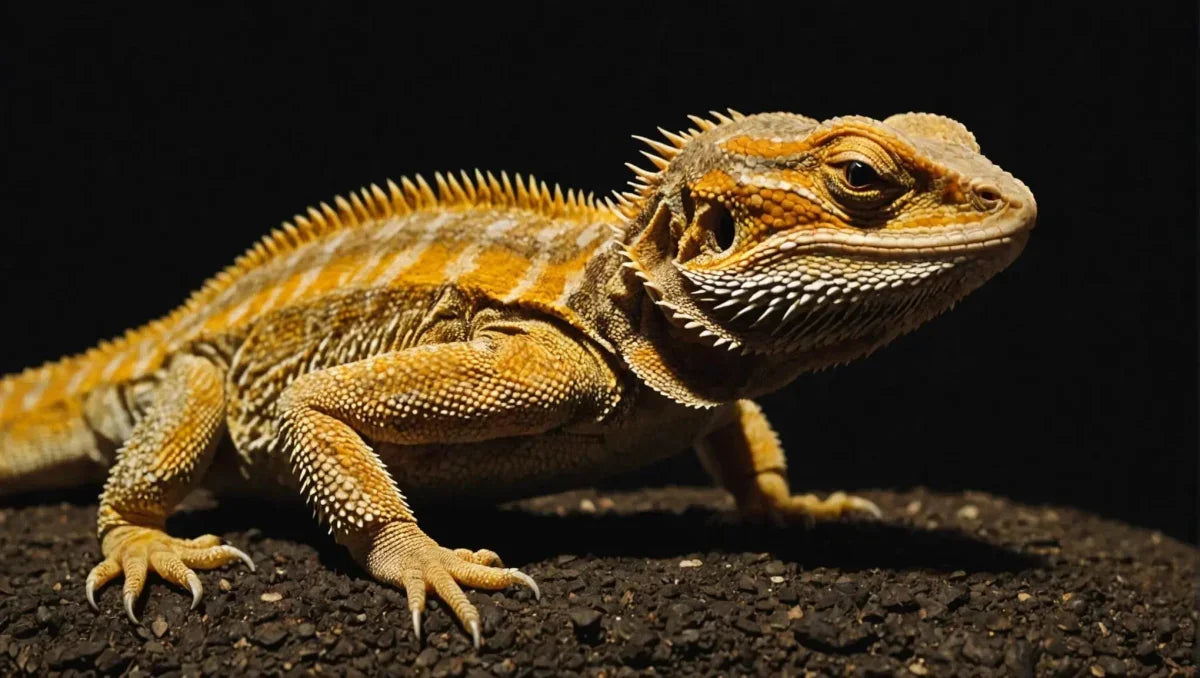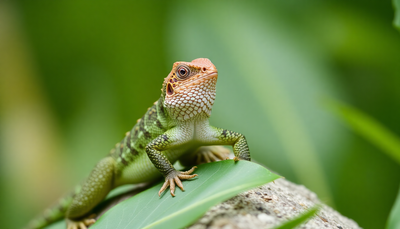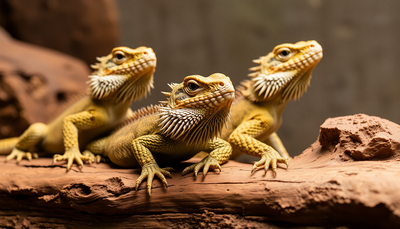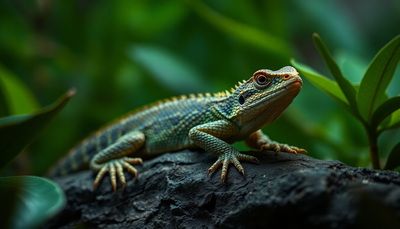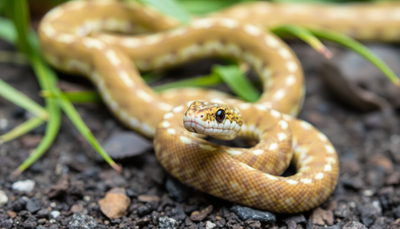Bearded Dragons: Nighttime Temperature Essentials

Bearded dragons are fascinating reptiles that require specific temperature conditions to thrive, even during the night. Understanding the appropriate nighttime temperature for bearded dragons is crucial for their health and well-being. In their natural habitat, bearded dragons experience temperature drops during the night, which is essential for their biological processes. Maintaining the right nighttime temperature in captivity is vital to mimic their natural environment and ensure their overall comfort. Fluctuations in nighttime temperatures can impact a bearded dragon's metabolism, digestion, and ability to rest properly. In this guide, we will explore the ideal nighttime temperature range for bearded dragons, the importance of providing a proper temperature gradient in their enclosure, and how to achieve the right nighttime temperatures using various heating sources. By mastering the art of regulating nighttime temperatures for your bearded dragon, you can help them lead a healthy and thriving life.
Ideal Nighttime Temperature for Bearded Dragons
Recommended Temperature Range
Bearded dragons, like all reptiles, are ectothermic, which means they rely on external heat sources to regulate their body temperature. Maintaining the right nighttime temperature is crucial for the health and well-being of your bearded dragon. The recommended nighttime temperature range for bearded dragons is between 65-75°F (18-24°C). This range mimics their natural habitat conditions and allows them to rest and digest properly. It's important to invest in a good quality thermometer to accurately monitor the temperature in the enclosure.
Factors Affecting Nighttime Temperature Needs
Several factors can influence the nighttime temperature needs of your bearded dragon. One key factor is the overall temperature in the room where the enclosure is located. If the room temperature drops significantly at night, you may need to provide additional heating sources to maintain the ideal temperature range for your pet. The type of enclosure and bedding used can also impact nighttime temperatures. Glass enclosures, for example, may retain heat better than mesh enclosures. Additionally, the presence of heating lamps or heating pads in the enclosure can help create a suitable nighttime environment for your bearded dragon. It's essential to consider these factors and make adjustments as needed to ensure your pet's comfort and health during the night.
Importance of Consistent Nighttime Temperature
Consistency in nighttime temperatures is crucial for the overall well-being of your bearded dragon. Fluctuations in nighttime temperatures can stress your pet and impact its digestion and immune system. By providing a consistent and appropriate nighttime temperature, you help your bearded dragon maintain its metabolic processes and overall health. Remember, bearded dragons are cold-blooded creatures and rely on external warmth to function optimally.
Monitoring Nighttime Temperature
Monitoring the nighttime temperature in your bearded dragon's enclosure is a responsibility that comes with owning these fascinating reptiles. Apart from using a thermometer, consider employing temperature-regulating devices like ceramic heat emitters or under-tank heating pads. These tools can help you maintain a stable nighttime temperature, ensuring your pet remains comfortable throughout the night. Regularly check the temperature readings to detect any fluctuations and promptly address them to prevent any adverse effects on your bearded dragon.
Behavioral Cues
Understanding your bearded dragon's behavior can also provide insights into whether the nighttime temperature is suitable. If your pet spends extended periods basking under the heat lamp during the night, it may indicate that the enclosure is too cold. On the other hand, if your bearded dragon consistently seeks cooler spots, the nighttime temperature might be too high. Observing these behavioral cues can guide you in making necessary adjustments to create an optimal nighttime environment for your beloved pet.
Conclusion
Maintaining the ideal nighttime temperature for your bearded dragon is essential for its health and happiness. By providing a consistent temperature range, considering environmental factors, and monitoring your pet's behavior, you can ensure that your bearded dragon thrives in its habitat. Remember, a comfortable and well-regulated nighttime environment contributes significantly to your pet's overall quality of life and longevity.
Additional Resources
For more detailed information on bearded dragon care, check out reputable sources such as veterinary websites, herpetological societies, and experienced reptile keepers. Knowledge is key to providing the best care for your scaly companion!.
Methods to Maintain Optimal Nighttime Temperature
Heating Equipment Options
Maintaining the ideal nighttime temperature within your reptile enclosure is crucial for the health and well-being of your scaly companion. Choosing the right heating equipment is the first step in creating a comfortable environment for your reptile. There are several heating options available, each with its unique benefits and applications. Consider options such as heat mats, ceramic heat emitters, heat cables, and radiant heat panels. Heat mats are ideal for providing belly heat, mimicking the warmth your reptile would feel from the ground in its natural habitat. Ceramic heat emitters are great for creating an ambient heat source without emitting light, making them suitable for nocturnal reptiles. Heat cables can be used to create a heat gradient within the enclosure, while radiant heat panels offer efficient and widespread heating.
Setting Up the Enclosure for Nighttime
In addition to selecting the appropriate heating equipment, the setup of your reptile enclosure plays a crucial role in maintaining optimal nighttime temperatures. Proper insulation is key to preventing heat loss and ensuring a stable environment for your reptile. Consider using insulation materials such as foam boards or reflective barriers to trap heat within the enclosure. Utilize digital thermometers to accurately monitor temperature levels and make adjustments as needed. To create a thermal gradient, place heating elements at one end of the enclosure to provide a warm basking spot while allowing for cooler areas on the opposite side. This setup enables your reptile to regulate its body temperature effectively.
Monitoring and Adjusting Temperature
Regular monitoring of nighttime temperatures is essential to safeguard your reptile's health. Invest in high-quality digital thermometers to obtain accurate temperature readings throughout the enclosure. Keep a detailed log of temperature fluctuations to identify any patterns or irregularities. Factors such as ambient room temperature, enclosure size, and external climate can all influence nighttime temperatures. Be prepared to adjust the settings on your heating equipment based on these observations to maintain a consistent and comfortable environment for your reptile. By staying diligent and proactive in temperature monitoring and adjustment, you can ensure that your reptile thrives in its nighttime habitat.
Signs of Incorrect Nighttime Temperature
Behavioral Changes in Bearded Dragons
Bearded dragons are ectothermic creatures, relying on external sources of heat to regulate their body temperature. Incorrect nighttime temperatures can lead to significant behavioral changes in these reptiles. Some signs to watch out for include:.
-
Restlessness: Bearded dragons may become restless and have difficulty settling down during the night if the temperature is too cold.
-
Lack of appetite: A sudden decrease in appetite can indicate that the nighttime temperature is not suitable for your beardie.
-
Aggression: Unusual aggression or irritability in your bearded dragon might be a response to discomfort caused by incorrect temperatures.
-
Lethargy: Conversely, if your beardie appears overly lethargic or sluggish, it could be a sign of temperatures being too high or too low.
Health Issues Associated with Incorrect Nighttime Temperature
Maintaining the correct nighttime temperature is crucial for the overall health and well-being of bearded dragons. Failure to provide the appropriate temperature range during the night can result in various health issues, including:.
-
Respiratory Infections: Bearded dragons are susceptible to respiratory infections when exposed to low nighttime temperatures, leading to symptoms like wheezing, mucus discharge, and difficulty breathing.
-
Digestive Problems: Incorrect nighttime temperatures can disrupt the digestion process in bearded dragons, causing issues like impaction or bloating.
-
Metabolic Disorders: Fluctuating nighttime temperatures can impact the metabolism of bearded dragons, potentially leading to metabolic bone disease or other metabolic disorders.
-
Weakened Immune System: Prolonged exposure to incorrect nighttime temperatures can weaken your beardie's immune system, making them more vulnerable to various illnesses and diseases.
Importance of Temperature Gradient
In addition to the dangers of incorrect nighttime temperatures, it is essential to provide a proper temperature gradient in the bearded dragon's habitat. A temperature gradient allows these reptiles to thermoregulate effectively, moving between warmer and cooler areas as needed to maintain their body temperature.
Monitoring and Adjusting Nighttime Temperatures
To ensure the well-being of your bearded dragon, it is crucial to monitor nighttime temperatures regularly. Consider using a reliable thermometer to check the temperature in different areas of the enclosure, ensuring that the nighttime temperature falls within the recommended range for bearded dragons.
Providing Heat Sources
There are various heat sources available for maintaining suitable nighttime temperatures for bearded dragons. Ceramic heat emitters, heat mats, and radiant heat panels are popular options that can help create a comfortable environment for your pet during the night.
Consulting a Veterinarian
If you notice any concerning behavioral changes or health issues in your bearded dragon, it is advisable to consult a reptile veterinarian promptly. Professional guidance can help address temperature-related issues and ensure the optimal care and health of your beloved pet.
By being vigilant about nighttime temperatures and their impact on bearded dragons, you can create a safe and comfortable environment that promotes their well-being and longevity.
Conclusion
Maintaining the appropriate temperature for your bearded dragon at night is crucial for their health and well-being. By providing a warm spot and monitoring the overall temperature in their habitat, you can ensure that your pet remains comfortable and healthy throughout the night. Remember, a consistent nighttime temperature is just as important as the daytime temperature for the overall care of your bearded dragon.


